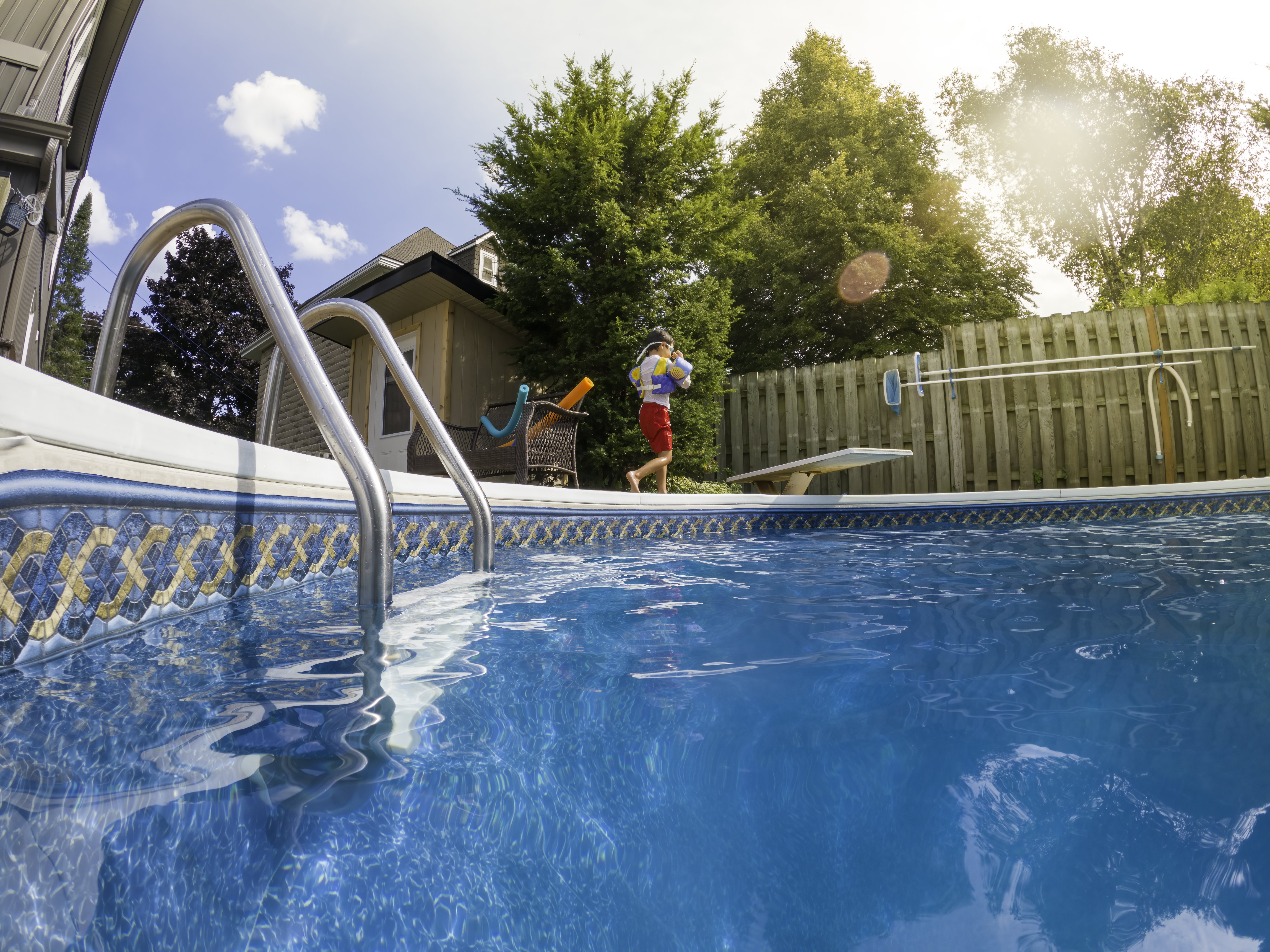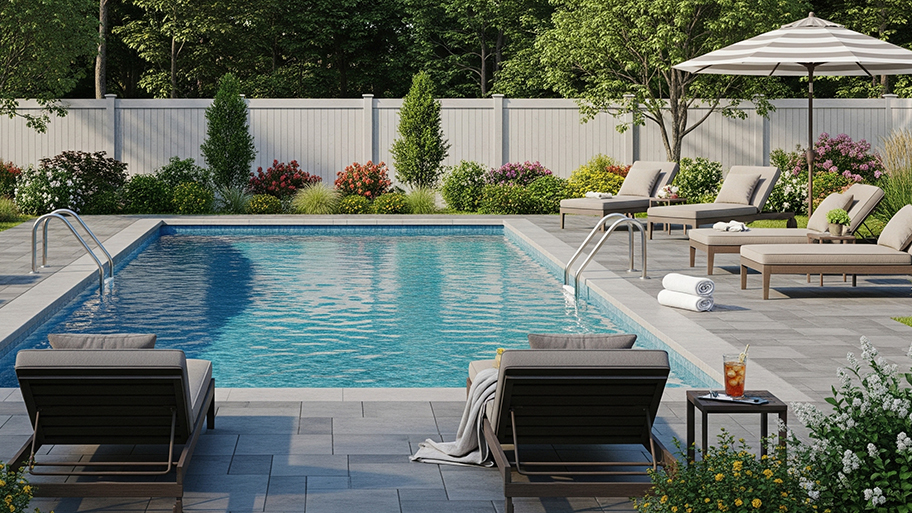
An inground pool offers endless fun in the summer, so if you're considering it for your home, read up on average inground pool costs in New York.
Splish and splash with peace of mind this summer


Pool bonding protects users against shock and electrocution.
Bonding connects all conductive parts of the pool.
Grounding directs electrical currents toward the ground.
Pool bonding and grounding require a professional electrician.
While swimming and splashing in a pool is a fun way to unwind, safety measures are necessary to protect your summer swimmers. Some homeowners may not realize that pools come with the risk of electrocution. That’s why pool bonding and grounding are essential when installing your pool. Here’s everything you need to know about keeping your family safe with pool bonding and grounding.
Pool bonding, or equipotential bonding, refers to creating an equal, balanced level of electrical potential among all conductive parts of a pool by using pool bonding wire to build a low-impedance pathway between these electrical and metallic parts.
In more basic terms, pool bonding helps minimize electrical voltage shocks that could harm swimmers or those walking around the pool. It’s an element of pool safety you can’t ignore.

Every conductive element needs to be bonded. This includes the metal ladder you use to get in and out of the pool, the frame around the pool, and any electrical components, like filters and heat pumps.
An electrician will use copper wire, bonding lugs, a pool bond, and a bonding grid to create a complete, non-impedance pathway to equalize voltage across all the electrical and metallic parts of the pool.
When bonding a pool, the electrician will use several parts to complete the bonded system and connect all the conductive elements.
Bonding lugs: The bonding lugs connect all the conductive elements with copper wire running throughout the bonded system.
Copper wire: Pool bonding requires at least 8-gauge copper wire to connect conductive elements and will connect to each component with the bonding lugs.
Pool bond: This part is installed near the pool filter. It includes a metal plate inside and a copper wire.
Skimmer bonding kit: This kit attaches to the skimmer to bond the pool water.
Bonding grid: This metallic grid is installed around the pool and deck to create an equipotential plane that can bond all conductive parts of the pool.

Like bonding, grounding is essential for keeping the pool and surrounding area safe. Pool grounding involves connecting the bonded pool system to the ground as an added precaution against excess electrical currents. The grounding will direct the electrical currents to the ground, away from the pool or people and animals nearby.
Pool bonding and pool grounding are often confused with one another. However, with pool grounding, the goal is to direct the electrical current toward the ground. This will keep excess electricity from shocking people or pets in or around the pool.
To ground a pool, an electrician connects the pool equipment to the electrical panel, which supplies power. This system then connects to the ground through a ground-fault circuit interrupter (GFCI) breaker. Excess electrical currents flow toward the GFCI breaker rather than toward anyone in the pool, and the breaker cuts the power.
Once an electrician bonds the pool, they can start working on grounding the system. This process requires more copper wire as well as the GFCI breaker.
GFCI breaker: This element directs excess electricity to the ground and cuts power to malfunctioning elements that are shorting or faulting.
Copper wire: Grounding a pool will require an 8- to 12-gauge copper pool bonding wire to connect electrical components and the electrical panel to the breaker.
Electrical work for a pool costs about $500 to $1,500, and bonding and grounding will cost around $200 to $300 for four to six bonding points and two grounding rods.
Pool bonding and grounding may be a more expensive part of the budget for the cost of an in-ground pool compared to the cost of an aboveground pool, but both pool types will require permits and professional labor costs.
Whether you’ve installed an in-ground pool with the help of an in-ground pool installation company near you or decided on a DIY setup with a smaller, aboveground pool, all pools require bonding and grounding to prevent the risk of electrocution.
Even pools with vinyl liners or tile must be bonded and grounded since electrical components or metal frames can all act as electrical conductors. If you’re doing extensive repairs or additions to the pool, you may need to contact a pool repair service and hire a local electrician to ensure the bonding and grounding system remains intact. Each conductive element needs to be connected in a system via bonding. Then, the pathway needs to be directed toward the ground. This will help direct and dissipate electrical currents to prevent shocks.
While pool owners might be able to find DIY pool bonding kits for $20 to $100, it’s best to leave this type of work to a professional electrician. The bonding and grounding needs to meet the National Fire Protection Association (NFPA) 70 National Electric Code. Also, many municipalities require licensed electricians to complete pool bonding and grounding.
Your electrician will ensure your pool bonding and grounding is up to code. This is necessary for all pool types since an unbonded or improperly bonded pool can increase the risk of electrocution.
Homeowners should steer clear of DIY electrical repairs or installations, as the risk of injury is shockingly high! Instead, hire a local electrician who has the expertise to complete electrical jobs safely.
Once the pool is installed, you’re probably eager to jump in or float along the cool water. While you’ll want to account for a couple of hours to a few days for pool bonding and grounding, depending on the pool size, you’ll also need to consider the time to apply for and secure permits and complete inspections.
Electrical work for pools typically requires permits, which can take a few days to a few weeks to obtain. The work must be inspected once an electrician has bonded and grounded the pool.
We hired KMM as a subcontractor to perform work on multiple locations in Manhattan and in the Caribbean. They had never once met a deadline and went far over budget. One small hot tub took them more than 6 months to try to demolish, form and repour. On other jobs there were leaks found as...
My Construction Group did an amazing job on our home renovation. Every detail was handled with care and precision. The quality of their work speaks for itself ? our house looks brand new! Highly recommended.
Excellent camera system installation! Never regret hiring them. Thank you so much, I will be recommending you to my friends!
Everything from measuring, ordering, installation and customer service was professional. Excellent work all around.
I first want to thank Angies List for helping me find DTV Installations. I have been bad results with a previous contractor who was referred by friends - its great to have access to this list to find great deals by reputable service providers that care about their reputation and provide a...
I did not like working with them. I don't find them to be organized. They show up days when I didn't ask them to show up. They don't do the job. They installed things I didn't ask to install.
From average costs to expert advice, get all the answers you need to get your job done.

An inground pool offers endless fun in the summer, so if you're considering it for your home, read up on average inground pool costs in New York.

Regular pool liner replacements are key to a properly maintained pool. Find out the average cost of pool liner replacement in New York City.

A pool remodel can bring new life to your yard. Weigh the average pool remodel costs in New York so you can plan accordingly.

Everything was going swimmingly, but now your pool heater is not working properly. Here are some troubleshooting tips to get you back in business.

Ready to say goodbye to your swimming pool and hello to lush, green grass? Learn how to fill a swimming pool with dirt to ensure proper drainage for an even yard.

Want to build a pool but can’t decide on a fiberglass versus concrete pool? Learn the pros and cons of each so you can choose the one that’s right for you.